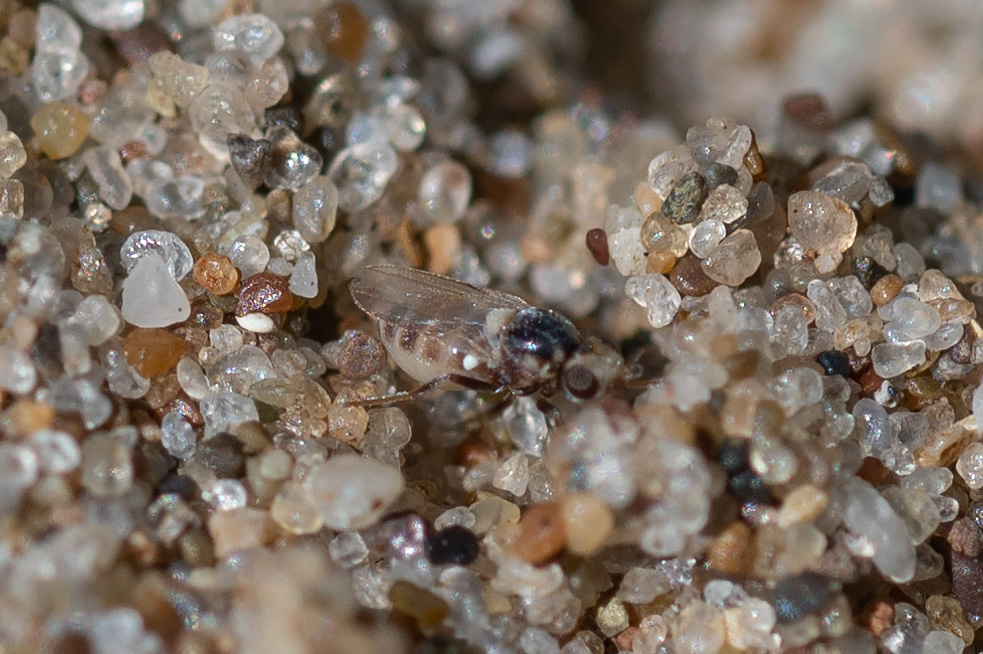Diptera.info :: Identification queries :: Diptera (adults)
Who is here? 1 guest(s)
|
Chloropidae ID => ?Gaurax flavomaculatus, Oscinellinae
|
|
| Woodmen |
Posted on 23-09-2022 03:16
|
|
Member Location: Kirov region, Russia Posts: 2014 Joined: 17.01.13 |
Russia, Kirov region. 18.09.2022. Vladimir. https://www.inatu.../135687420 Woodmen attached the following image:  [283.59Kb] Edited by Woodmen on 08-11-2022 19:33 |
| von Tschirnhaus |
Posted on 08-11-2022 17:09
|
|
Member Location: Bielefeld, Germany Posts: 454 Joined: 04.11.07 |
Chloropidae: ? Gaurax flavomaculatus (Duda, 1933) [Oscinellinae; described in Goniopsita and formerly transferred to Fiebrigella, Lasiambia and in 2005 to Gaurax; junior synomym G. britannicus Deeming, 1980]. This is a very interesting image as the identification is difficult and not sure. In its habitus the fly looks like the choropine genus Eutropha with a costa ending at vein R4+5. Eutropha species prefer sandy brackish and saltwater coasts, gravel pits and dunes, but in much more southern latitudes than the Kirov Region N of Moscow. The colouration is similar to Capnoptera pilosa, but compare differences in http://www.diptera.info/forum/viewthread.php?forum_id=5&thread_id=72042 . The costa of G. flavomaculatus is weaker behind the end of vein R4+5, thus the photograph could agree. I know flavomaculatus without a yellow spot inside the humeral callus and continueing backwards as a weak and very short yellow stripe. Moreover, the legs are predominantly yellow including the basal half of the femora. The hind corners of the frons around the vte and vti bristles are darker than on this image. Features which agree well: only the hind part of the ocellar triangle is dark, 3rd antennal segment dark, (black palpi not to be seen), short yellow scutellum, notopleural area and upper parts of anepisternum yellow, scutum only slightly dusted. The specimen seems to have ingested electrolyte-rich water. Many Gaurax spp. prefer forests and develop in rotting wood and conifer cones, being attacked by other insects. G. flavomaculatus was reared from a puparium behind bark. |
| Woodmen |
Posted on 08-11-2022 19:31
|
|
Member Location: Kirov region, Russia Posts: 2014 Joined: 17.01.13 |
Thank you very much, von Tschirnhaus! Regards Vladimir. |
| Jump to Forum: |













